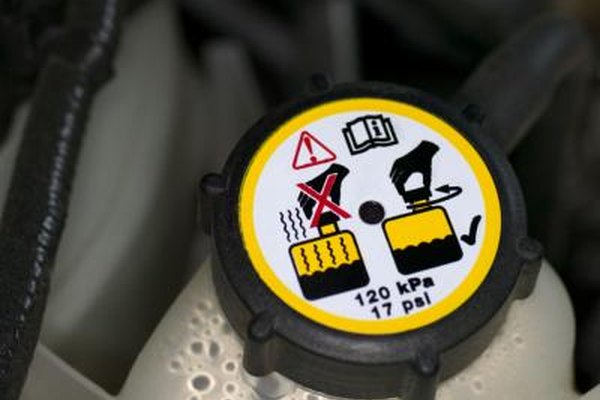Can Low Coolant Cause a Check Engine Error?
by Jody L. CampbellUpdated July 26, 2023
Overview
The PCM and Low Coolant
Low coolant in the radiator of your car can trigger the malfunction illumination light (MIL), also known as the "check engine" light. Low coolant can affect the internal temperature of the engine, which is protected by the antifreeze. When the coolant is too low to effectively protect the internal temperature of the engine, the engine coolant temperature (ECT) sensor will provide a false reading to the powertrain control module (PCM). Once the PCM detects the anomaly in the coolant system, the ECT fails to communicate the necessary voltage signal from the PCM, which turns on the "check engine" light.
Coolant Temperature Sensor

The coolant temperature sensor regulates the internal temperature of the combustion engine. Initialized in OBD (on-board diagnostic) and OBD II (vehicles manufactured from 1996 and beyond), the sensor is immersed in the coolant system in order to monitor the coolant protection level. Low coolant will not provide enough temperature protection to sufficiently control the internal heat. As a result, the ECT sensor can be compromised.
Will Adding Coolant Solve the Problem?

Maybe, but there's no guarantee damage hasn't been done to either the ECT sensor or the thermostat. Top off the radiator with the proper antifreeze, and see what happens. It will take a few hours driving at normal vehicle operating temperature for the ECT to communicate to the PCM and reset the MIL. If the "check engine" light does not reset, further diagnosis will be required to determine what needs to be replaced.
In many cases, when the ECT sensor fails, the "check coolant" light will illuminate--if applicable to the specific vehicle--in addition to the MIL.
Writer Bio
Jody L. Campbell spent over 15 years as both a manager and an under-car specialist in the automotive repair industry. Prior to that, he managed two different restaurants for over 15 years. Campbell began his professional writing career in 2004 with the publication of his first book.






